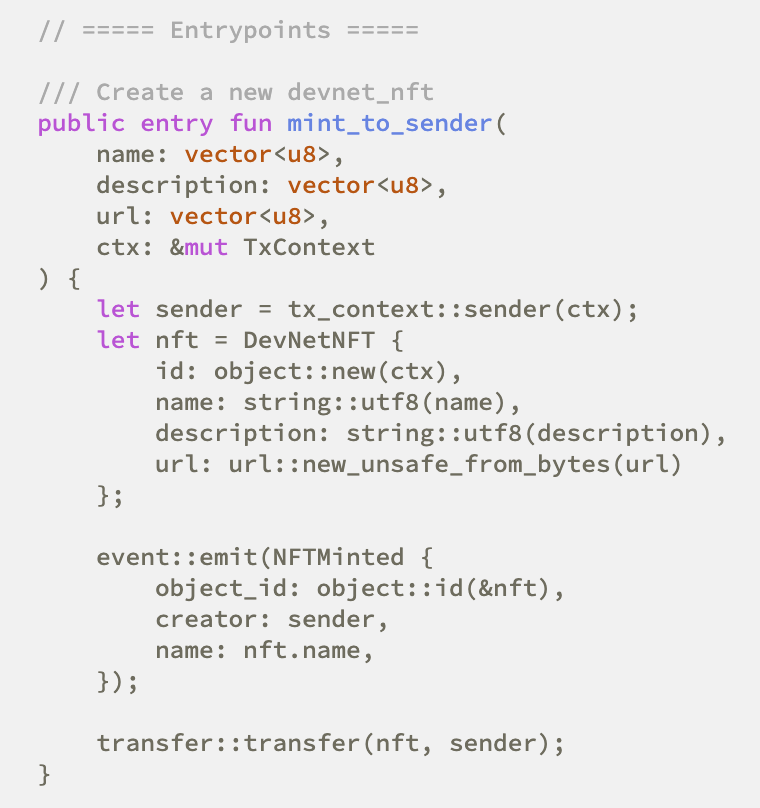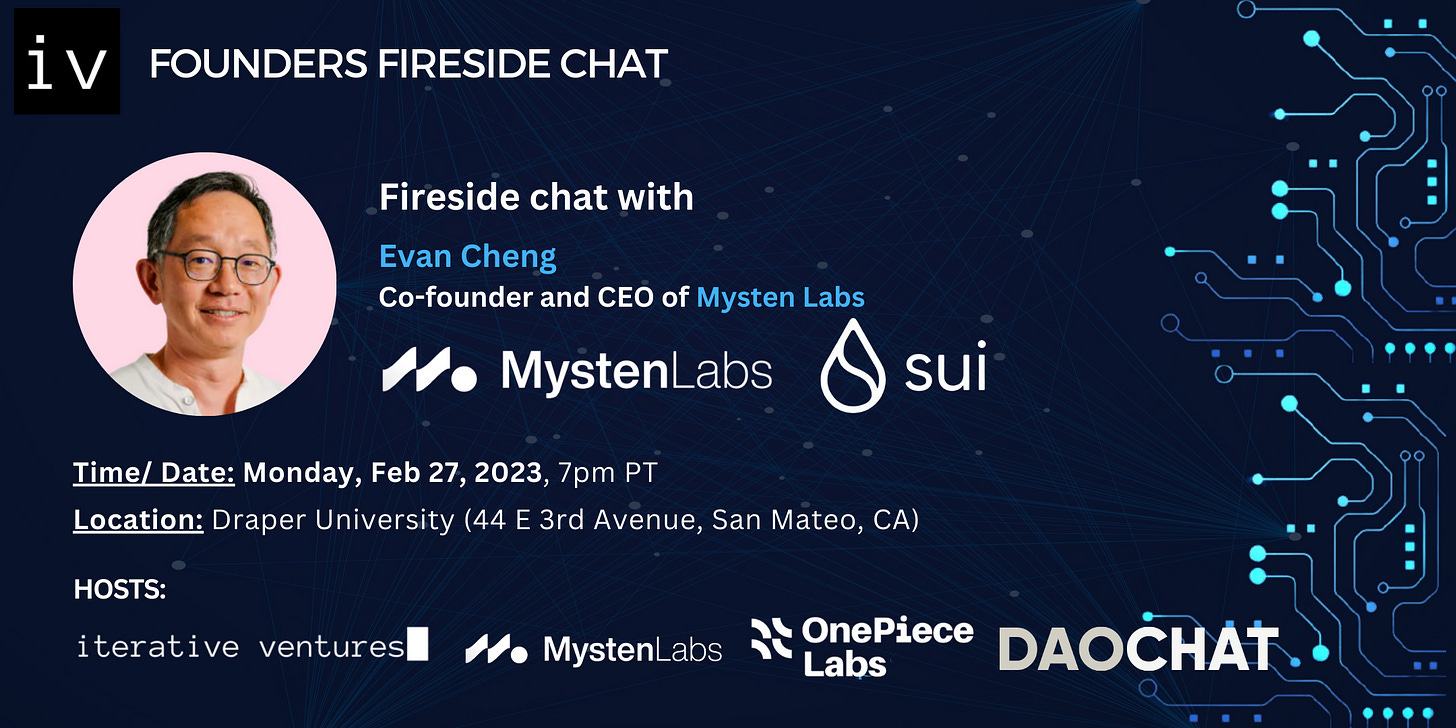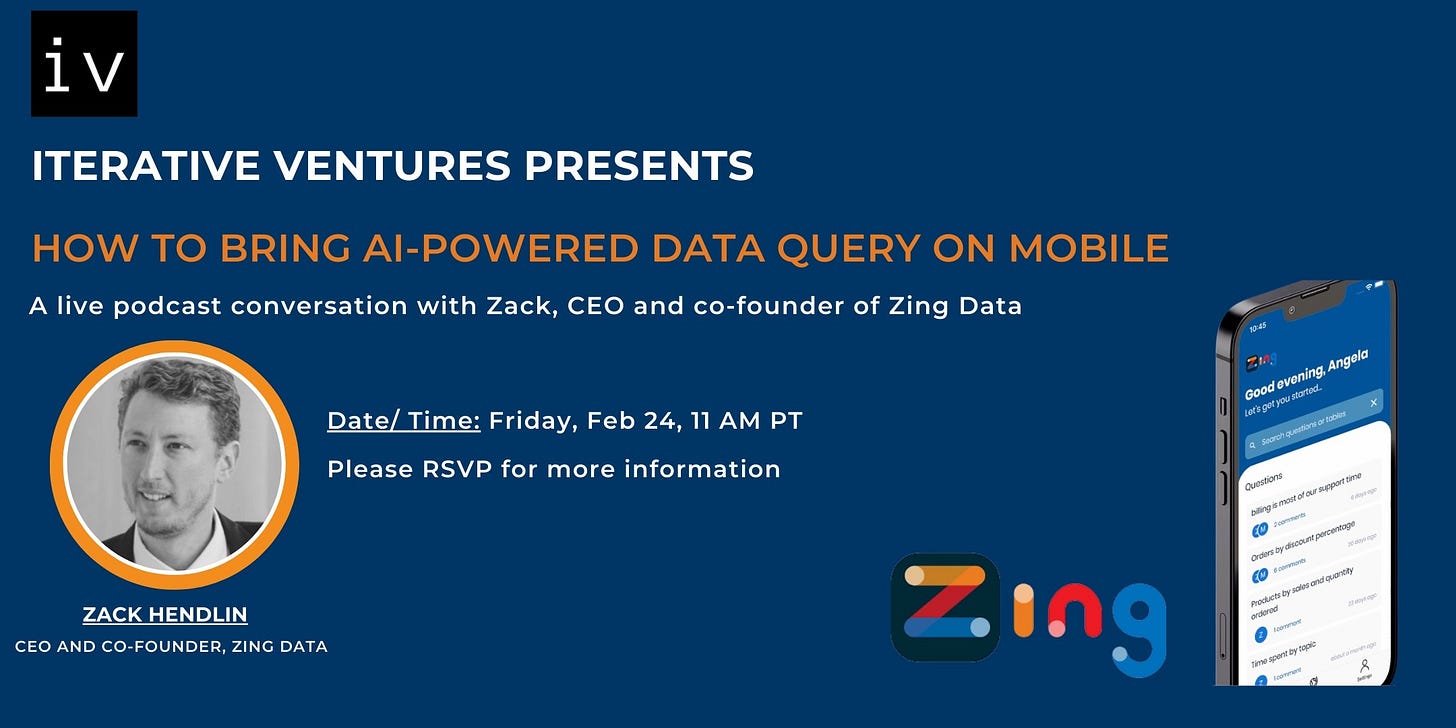Digital asset-centric blockchain
How and why Sui’s technical design and implementation puts digital asset at the forefront
This post will give a background/ preview to prepare for the upcoming fireside chat on Monday, Feb 27th. RSVP here.
*We thank Evan Cheng for reviewing this article.
Background
Philosophy of Internet
“When the internet was conceived in the early 1970s, the notion of openness lay at the heart of its architecture, philosophy and technical protocols” as said by Vinton Cerf, the co-inventor of TCP/IP, in this article.
Cerf noted, in The Internet Is For Everyone, that in order to achieve the motto that the internet is for everyone and thus ensure its openness, there are both technical (scalability and affordability) and non-technical challenges (regulations and market design)
Decentralizing the payment layer
Since that article, the web has gone through various iterations, but payment and ownership remain a challenge with the reliance on third trusted parties.
This is where on Oct 31, 2008, Bitcoin came out as the first proof-of-concept to solve this problem via introducing a new class of “distributed ledger” and “distributed timestamp server on a peer-to-peer basis”, now known as the blockchain.
Fast forward to today, many innovations were implemented including smart contracts, different asset types, optimizing consensus mechanisms, parallelizing execution, modularizing blockchain stack, compressing data to be saved on-chain, etc.
On the social front, this is where the concept of web3 emerged - “a shift in the relationship between products, platforms and their users, specifically around access and ownership of assets”.
However, with the increasingly rapid adoption of digital assets, new technical challenges and limitations are becoming obvious.
Current Challenges
As proposed by Evan at Mysten Labs, blockchain is the infrastructure for programmable assets. As opposed to centralized trust, the purpose of the infrastructure is to ensure the viability of distributed trust (through incentive alignment and market design manifested through tokens) and programmability (through more generalized smart contract and digital asset design).
The fundamental challenge to achieving this view has been the inadequacy of asset-level control and asset-owner relationship in the existing data model design. For example, asset minting, ownership assignment, and transfer are done on the smart contract level.
This has an elevated risk of ownership as smart contracts dictate the movement and life cycle of the digital asset (that’s not native token to a blockchain). Put another way, the users cannot interact with the underlying asset without going through a smart contract. (See here for background)

Furthermore, this design style adds a level of complexity and limitation for asset sharing across smart contract boundaries, ultimately resulting in less utility. (See fractional NFTs as a partial solution)
This also limits the relationships to be had across assets - asset composability.
Taking this direction, Sui from Mysten Labs introduces various innovations around generalized asset design and bringing to the fore asset resource definition.
Sui’s Uniqueness
To begin, we have to understand that Sui uses Move as the custom transactions and smart contract programming language.
The Move Language
Move was born in 2018 during the early days of the Libra/Diem project at Facebook. The goal of the project was to create the Libra blockchain - a decentralized, programmable database, designed to support a low volatility cryptocurrency that will have the ability to serve as an efficient medium of exchange for billions of people around the world.
Thus, Move was designed with safety and flexibility in mind. (White Paper here)
Sui Move
Sui (Move) iterated upon what was created at Libra by doing away with the “must opt-in” approach to receive an asset. Furthermore, because of the asset definition, Sui Move’s global storage is keyed by programmable object ID’s. By comparison, the global state of Ethereum is the global state of all accounts (Read more here).
This leads to more efficiency and security as now your functions can directly interact with the programmable object (asset) thus ensuring native ownership (see here for ownership enforcement check) and transfer.

Focusing from an asset-centric point of view also led Sui to focus on scalability from another perspective.
System design
In other layer 1 systems, because transactions are not on an object level, it goes through the flow of waiting in the mempool before being processed.
Because of Sui’s design from an asset-centric standpoint where the global storage contains object ID’s and ownership (see here), this design also allowed an additional property to consider for scalability - to group only related transactions together.
This way, transactions occurring with your platform would not be affected when another on-chain project has a spike in traffic volume as the two sets of transactions are not related and therefore processed separately.
An illustration of DAG-based BFT consensus implementation. Source
Final Note
While there are many forecasts on where web3 is going to go and how blockchains will evolve, one thing that is certain is that throughout blockchain’s history, it was originally intended to support Bitcoin, and by extension, asset ownership and transfer, be it cryptocurrency, tokens, or social capital.
Sui attempts to bring digital asset ownership by building a system revolving around digital assets.
Here is Sui's Whitepaper for a deeper dive. To learn more, please join the event and meet with Evan and the team building the Sui ecosystem.
Investment Opportunity
We have a private opportunity to invest in Celestia, the first modular blockchain network, with attractive deal terms. Its mainnet launch is expected by the end of this year. If you are interested to learn more, please reply to this email.
Last Week’s AMA
The recording of the session is now available here. Learn about Zack’s journey in building Zing data!
3/9 - Building modular, customizable rollups with Eclipse - RSVP
This is a virtual AMA with Eclipse founder, Neel, to talk about Eclipse’s design and why it can help layer-1 blockchains scale. Latest news on Eclipse: link
Time/ Date: Thur, March 9, 2023, 11 am PT
Location: Online
** There are several events we are currently planning after this including chatting about potentially offering another variable that can help break out of the blockchain trilemma. Stay Tuned!
Partner Events
3/7 - Metaverse and Gaming Conversations & Demos with Upland. RSVP
Networking, Drinks, and Metaverse and Gaming conversations.
Meet people in Metaverse and Gaming and share what's new.
If you have made something cool to share in the Metaverse and Gaming space OR something made by someone else please, come and share / demo. It is in a bar but please do feel free to bring your laptop to share.
Heading over to EthDenver? Please reach out as we plan to meet a group of community members during the conference.
Iterative Ventures is a web3 investment fund & community with the aim of supporting digital asset adoption. We have a focus on infrastructure and technology owing to our technical background.
Please reach out (team@iterativeventure.com) if you would like to learn more or collaborate, including being featured in our community events/ media outlet.
Follow us on Twitter and join our Telegram community to get the latest update!






